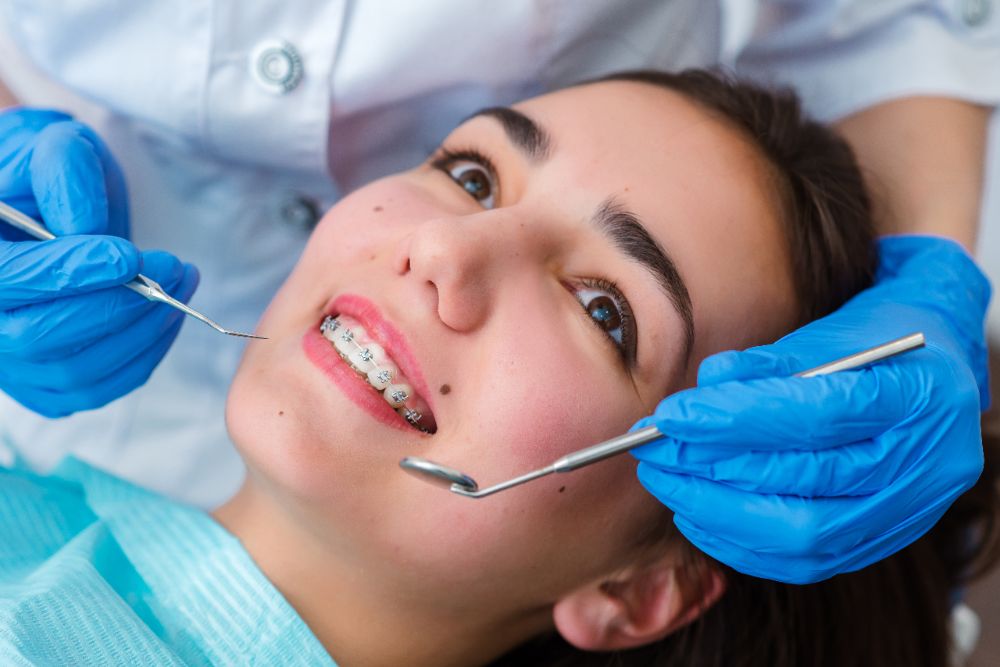Why Cumming Invisalign is the Perfect Option for a Discreet Orthodontic Solution
Why Cumming Invisalign is the Perfect Option for a Discreet Orthodontic Solution
Blog Article
Comprehensive Overview to Orthodontics Treatments for Correcting Oral Imbalances
Comprehending the ins and outs of each treatment, including their systems, benefits, and potential downsides, is essential in making notified decisions about one's orthodontic treatment. As we browse with the detailed guide to orthodontic procedures for dealing with dental misalignments, the intricate information of each method will unfold, shedding light on the path toward a harmonious and practical dental alignment.
Orthodontic Procedures Overview

Routine changes and surveillance are important components of orthodontic therapy to ensure progression is on track and to make any kind of essential alterations along the means. By undergoing orthodontic treatments, clients can not only achieve a straighter smile but likewise improve their general oral health and wellness and function.
Conventional Dental Braces: How They Work
When taking into consideration orthodontic treatments for oral misalignments, traditional braces stick out as a tried and true approach for dealing with teeth positioning. Conventional braces are composed of braces, cords, and bands that collaborate to use constant stress on the teeth, slowly moving them into the desired placement. The brackets are affixed to the teeth using an unique adhesive, and the cords are threaded through the braces. By readjusting the stress of the wires, orthodontists can manage the instructions and pressure related to each tooth, guiding them right into appropriate alignment gradually.
As pressure is applied to the teeth via the braces, the bone surrounding the teeth is reshaped to sustain the brand-new tooth placements. Clients will certainly require routine changes at the orthodontist's office to ensure the dental braces proceed to apply the proper pressure for reliable teeth motion.
Unseen Aligners: Cons and pros
Undetectable aligners provide a convenient and very discreet option to standard dental braces for dealing with oral misalignments. These clear, customized trays are practically invisible when worn, making them an enticing option for individuals looking for a much more visually pleasing orthodontic therapy. One of the main benefits of unnoticeable aligners is their removability, permitting less complicated upkeep of oral hygiene compared to standard braces. People can get rid of the aligners before eating or brushing their teeth, lowering the threat of food getting stuck in the home appliance and simplifying the cleansing procedure.

Surgical Orthodontic Options
Surgical interventions in orthodontics present viable choices for attending to complex oral misalignments that might not be successfully solved via standard orthodontic treatments. While standard dental braces and unseen aligners can correct many orthodontic issues, particular cases require surgical treatment to attain optimum results. Surgical orthodontic options are typically recommended for serious malocclusions, significant jaw disparities, and cases where the underlying bone framework needs modification to achieve proper positioning.
One common medical orthodontic procedure is orthognathic surgical procedure, which involves repositioning the jaws to remedy functional concerns such as trouble chewing or talking. This surgical treatment is often performed in partnership with an orthodontist who assists align the teeth before and after the procedure. Surgical orthodontics might likewise involve procedures to expose influenced teeth, eliminate excess gum cells, or improve the jawbone to develop a much more unified face account.
Before taking into consideration surgical orthodontic choices, patients undertake a comprehensive analysis to figure out the necessity and prospective benefits of such interventions. invisalign. While surgery might seem overwhelming, it can substantially enhance both the feature and looks of the smile in situations where standard orthodontic therapies drop short
Retainers and Post-Treatment Care

Post-treatment treatment involves adhering to the orthodontist's directions carefully. This might consist of correct oral health practices, going to follow-up visits, and wearing the retainers as recommended. Failing to comply with post-treatment care instructions can cause relapse, where the teeth progressively click here for info return towards their original positions. Consistent retainer wear, excellent dental hygiene, and regular oral examinations are necessary for keeping the results accomplished through orthodontic surgery and making sure the long-lasting stability of the fixed oral positioning.
Verdict
In final thought, orthodontic procedures use different alternatives for fixing oral imbalances. Typical dental braces use steel brackets and wires to move teeth right into appropriate alignment. Unseen aligners provide an even more discreet option yet may not appropriate for all cases. Surgical orthodontic options are available for extra severe misalignments. Retainers are frequently used post-treatment to keep the brand-new positioning. In general, orthodontic treatments can successfully improve dental wellness and visual look.
As we navigate with the extensive overview to orthodontic procedures for dealing with dental misalignments, the elaborate details of each approach will unfold, shedding light on the course towards a unified and functional oral alignment. - invisalign
One of the most usual orthodontic therapies redirected here is the use of braces, which consist of metal brackets and cables that use gentle pressure to slowly move teeth right into the wanted position.When considering orthodontic treatments for dental imbalances, traditional dental braces stand out as a reliable method for fixing teeth positioning. Furthermore, undetectable aligners might not be suitable for complicated orthodontic problems that need even more substantial teeth activity, as they are commonly advised for moderate to modest instances. Retainers are personalized orthodontic tools made to hold teeth in their dealt with placements after the conclusion of orthodontic therapy.
Report this page